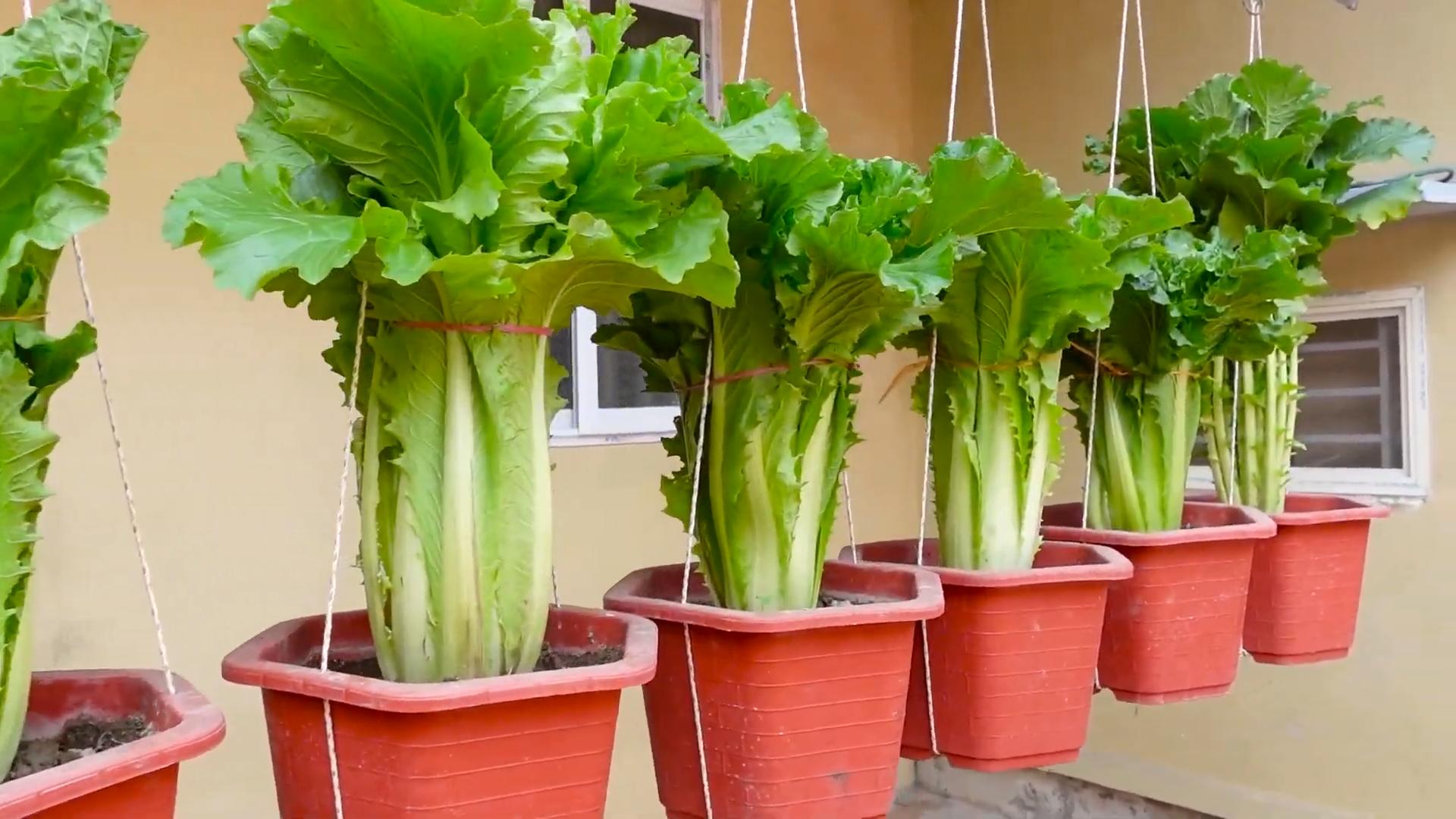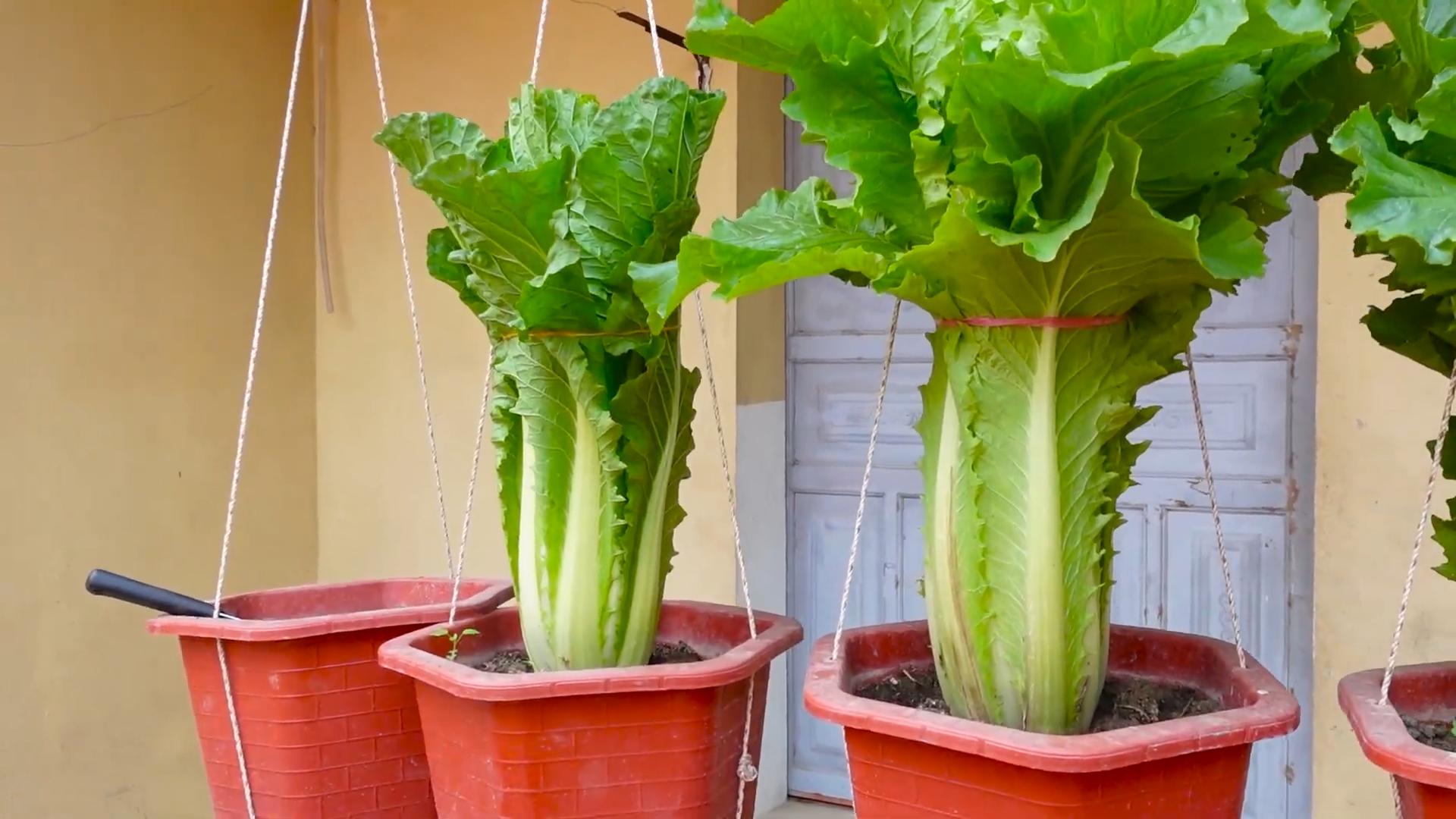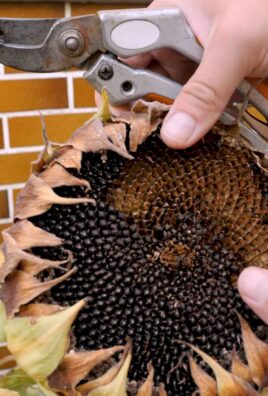Growing lettuce without a garden might sound like a gardener’s myth, but trust me, it’s absolutely achievable! Imagine fresh, crisp lettuce leaves gracing your salads, sandwiches, and even tacos, all harvested from your own home, regardless of whether you have a sprawling backyard or just a sunny windowsill. For centuries, humans have cultivated food in limited spaces, from ancient rooftop gardens in Babylon to the ingenious container gardens of modern urban dwellers. This resourcefulness stems from a deep-seated desire to connect with nature and provide for ourselves, a desire that resonates even stronger today.
In our fast-paced world, access to fresh, healthy produce can be a challenge. Supermarket lettuce, while convenient, often lacks the vibrant flavor and nutritional value of homegrown varieties. Plus, let’s be honest, the environmental impact of transporting produce across long distances is a growing concern. That’s where the magic of growing lettuce without a garden comes in! This DIY guide will equip you with simple, effective techniques to cultivate your own thriving lettuce patch indoors or in small spaces. I’m going to show you how to bypass the need for a traditional garden and enjoy the satisfaction of harvesting your own delicious, pesticide-free lettuce. Get ready to unleash your inner urban farmer!

Growing Lettuce Indoors: A Beginner’s Guide to Salad on Your Windowsill
Hey there, fellow salad enthusiasts! Ever crave a fresh, crisp lettuce salad but don’t have a garden? Or maybe it’s the dead of winter and the thought of braving the cold is just too much? Well, I’ve got good news for you: you can absolutely grow lettuce indoors! It’s easier than you think, and the satisfaction of harvesting your own homegrown greens is incredibly rewarding. I’m going to walk you through everything you need to know to get started.
What You’ll Need
Before we dive into the nitty-gritty, let’s gather our supplies. Here’s a checklist of what you’ll need to successfully grow lettuce indoors:
* Lettuce Seeds: Choose varieties that are well-suited for indoor growing. Loose-leaf varieties like Black Seeded Simpson, Salad Bowl, or Red Sails are excellent choices because you can harvest leaves as needed without pulling up the whole plant.
* Containers: You can use almost anything that holds soil and has drainage holes. I’ve used everything from plastic pots to repurposed yogurt containers. Just make sure they’re clean! Aim for containers that are at least 6 inches deep.
* Potting Mix: Don’t use garden soil! It’s too heavy and compacts easily, which isn’t ideal for lettuce. Opt for a lightweight, well-draining potting mix specifically formulated for containers.
* Grow Lights (Optional but Recommended): While lettuce can grow near a sunny window, supplemental grow lights will significantly improve your yield and prevent leggy growth, especially during the darker months. LED grow lights are energy-efficient and work great.
* Watering Can or Spray Bottle: For gentle watering.
* Small Shovel or Trowel: For handling the potting mix.
* Seed Starting Tray (Optional): If you prefer to start your seeds indoors before transplanting.
* Spray Bottle with Water: To mist the seedlings.
Step-by-Step Instructions: From Seed to Salad
Okay, let’s get our hands dirty! Here’s a detailed guide to growing lettuce indoors:
1. Prepare Your Containers:
* First, make sure your containers are clean. Wash them with warm, soapy water to remove any dirt or debris.
* If your containers don’t have drainage holes, drill a few into the bottom. Good drainage is crucial to prevent root rot.
* Fill your containers with the potting mix, leaving about an inch of space at the top. Gently pat down the soil to remove any air pockets.
2. Sowing the Seeds:
* There are two ways to sow your lettuce seeds: direct sowing into the containers or starting them in a seed starting tray. I usually prefer direct sowing because it minimizes transplant shock.
* Direct Sowing: Sprinkle the lettuce seeds evenly over the surface of the soil. Don’t overcrowd them! A good rule of thumb is to space them about an inch apart.
* Starting in a Seed Starting Tray: Fill the cells of the tray with potting mix. Sow 2-3 seeds per cell.
* Once you’ve sown the seeds, lightly cover them with a thin layer of potting mix (about 1/4 inch). Lettuce seeds need light to germinate, so don’t bury them too deep.
3. Watering and Germination:
* Gently water the soil using a watering can or spray bottle. You want to moisten the soil without disturbing the seeds.
* Cover the containers or seed starting tray with a clear plastic lid or plastic wrap to create a humid environment. This will help the seeds germinate.
* Place the containers in a warm location (around 60-70°F or 15-21°C).
* Keep the soil consistently moist but not waterlogged. Check the soil daily and mist with water as needed.
* Lettuce seeds typically germinate within 7-14 days. Once the seedlings emerge, remove the plastic lid or wrap.
4. Providing Light:
* This is where the grow lights come in handy! If you’re using grow lights, position them about 6-12 inches above the seedlings.
* If you’re relying on natural sunlight, place the containers near a sunny window that receives at least 6 hours of direct sunlight per day. A south-facing window is ideal.
* Rotate the containers regularly to ensure that all sides of the plants receive equal light. This will prevent them from leaning towards the light source.
* If you notice that your seedlings are becoming leggy (tall and spindly), it means they’re not getting enough light. Move them closer to the light source or supplement with grow lights.
5. Thinning the Seedlings (If Necessary):
* If you direct sowed your seeds and they’re growing too close together, you’ll need to thin them out.
* Once the seedlings have a few sets of true leaves (the leaves that look like miniature lettuce leaves), carefully snip off the weaker seedlings at the soil line, leaving the strongest ones spaced about 2-3 inches apart.
* If you started your seeds in a seed starting tray, you can transplant the seedlings into individual containers once they have a few sets of true leaves. Be gentle when transplanting to avoid damaging the roots.
6. Watering and Fertilizing:
* Water your lettuce plants regularly, keeping the soil consistently moist but not waterlogged. Check the soil moisture by sticking your finger into the soil. If the top inch feels dry, it’s time to water.
* Avoid overwatering, as this can lead to root rot.
* Fertilize your lettuce plants every 2-3 weeks with a diluted liquid fertilizer. Look for a fertilizer that’s specifically formulated for leafy greens. Follow the instructions on the fertilizer label.
7. Harvesting Your Lettuce:
* The best part! You can start harvesting your lettuce leaves once they’re about 4-6 inches long.
* For loose-leaf varieties, you can harvest individual leaves as needed. Simply snip off the outer leaves with scissors or your fingers, leaving the inner leaves to continue growing. This is called “cut-and-come-again” harvesting.
* For head lettuce varieties, you can harvest the entire head once it’s fully formed.
* Harvest your lettuce in the morning, when the leaves are crisp and fresh.
* Wash the harvested leaves thoroughly before eating.
Troubleshooting: Common Issues and Solutions
Even with the best intentions, you might encounter a few challenges along the way. Here are some common issues and how to address them:
* Leggy Seedlings: As I mentioned earlier, leggy seedlings are a sign of insufficient light. Move them closer to the light source or supplement with grow lights.
* Yellowing Leaves: Yellowing leaves can be caused by several factors, including overwatering, underwatering, nutrient deficiencies, or pests. Check the soil moisture and adjust your watering accordingly. If you suspect a nutrient deficiency, fertilize your plants with a diluted liquid fertilizer. Inspect the leaves for pests.
* Pests: Aphids, spider mites, and whiteflies are common pests that can attack lettuce plants. Inspect your plants regularly for signs of infestation. If you find pests, you can try washing them off with a strong stream of water or using an insecticidal soap.
* Root Rot: Root rot is caused by overwatering and poor drainage. Make sure your containers have drainage holes and avoid overwatering. If you suspect root rot, you can try transplanting your lettuce plants into fresh potting mix.
Choosing the Right Lettuce Variety
Not all lettuce varieties are created equal when it comes to indoor growing. Some are simply better suited for container gardening and indoor conditions. Here are a few of my favorite varieties for growing indoors:
* Black Seeded Simpson: This is a classic loose-leaf variety that’s known for its fast growth and mild flavor. It’s very easy to grow and tolerates a wide range of conditions.
* Salad Bowl: Another excellent loose-leaf variety with attractive, oak-leaf-shaped leaves. It’s heat-tolerant and produces a continuous supply of fresh greens.
* Red Sails: A beautiful loose-leaf variety with reddish-bronze leaves. It’s not only delicious but also adds a pop of color to your indoor garden.
* Tom Thumb: A miniature butterhead lettuce that’s perfect for small spaces. It forms small, compact heads that are ready to harvest in about 50 days.
* Little Gem: A small romaine lettuce that’s known for its crisp texture and sweet flavor. It’s a good choice for making Caesar salads.
Optimizing Your Indoor Lettuce Garden
Want to take your indoor lettuce growing to the next level? Here are a few tips to help you maximize your yield and keep your plants healthy

Conclusion
So, there you have it! Growing lettuce without a garden isn’t just a possibility; it’s a delightfully simple and rewarding reality. We’ve explored how you can transform your windowsill, balcony, or even a well-lit corner of your kitchen into a thriving lettuce patch. This DIY trick is a must-try for several compelling reasons.
First and foremost, it puts fresh, crisp, and flavorful lettuce literally at your fingertips. Imagine the convenience of snipping off exactly what you need for a salad, sandwich, or wrap, knowing it’s free from pesticides and bursting with homegrown goodness. No more last-minute trips to the grocery store or settling for wilted, pre-packaged greens.
Secondly, this method is incredibly accessible. You don’t need acres of land, specialized equipment, or a green thumb of mythical proportions. With just a few basic supplies – a container, some potting mix, water, and lettuce seeds – you can embark on this exciting gardening adventure. It’s perfect for apartment dwellers, urbanites, or anyone who wants to experience the joy of growing their own food without the commitment of a traditional garden.
Thirdly, growing lettuce indoors or in containers is a fantastic way to extend the growing season. While outdoor gardens are often limited by weather conditions, your indoor lettuce patch can flourish year-round, providing you with a constant supply of fresh greens, even in the dead of winter.
But the benefits don’t stop there. This DIY project is also incredibly versatile. Feel free to experiment with different varieties of lettuce. Romaine, butterhead, loose-leaf – the choice is yours! You can also try mixing different types of lettuce in the same container for a colorful and flavorful salad blend. Consider adding companion plants like herbs (chives, parsley, or basil) to enhance the flavor of your lettuce and deter pests.
For those looking to take their indoor lettuce growing to the next level, consider investing in a grow light. This can be particularly helpful if you don’t have a naturally sunny spot. Grow lights provide the necessary light spectrum for optimal lettuce growth, ensuring a bountiful harvest. You can also explore hydroponic systems for an even more efficient and space-saving way to grow lettuce.
Don’t be afraid to get creative with your containers. Upcycle old buckets, tubs, or even plastic bottles. Just make sure they have drainage holes to prevent waterlogging. You can also decorate your containers to add a touch of personality to your indoor garden.
We wholeheartedly encourage you to try this DIY trick and experience the satisfaction of growing your own lettuce. It’s a fun, educational, and rewarding project that will bring fresh flavor and a touch of green into your life. Once you’ve given it a try, we’d love to hear about your experience. Share your photos, tips, and tricks in the comments below. Let’s build a community of indoor lettuce growers and inspire others to embrace the joy of homegrown goodness! Remember, the key to successful indoor lettuce growing is consistent watering, adequate sunlight (or a grow light), and a little bit of patience. Happy growing!
Frequently Asked Questions (FAQ)
What kind of container should I use for growing lettuce?
The best container for growing lettuce is one that is at least 6 inches deep and has drainage holes. This allows the lettuce roots to grow properly and prevents water from accumulating at the bottom, which can lead to root rot. You can use a variety of containers, such as plastic pots, terracotta pots, or even repurposed containers like buckets or tubs. Just make sure the container is clean and free of any harmful chemicals. The size of the container will depend on how much lettuce you want to grow. A smaller container is fine for a few plants, while a larger container is needed for a larger harvest.
What type of soil is best for growing lettuce in containers?
Lettuce thrives in well-draining, nutrient-rich soil. A good quality potting mix is ideal for growing lettuce in containers. Avoid using garden soil, as it can be too heavy and compact, which can hinder root growth. You can also amend your potting mix with compost or other organic matter to improve its fertility and drainage. Look for a potting mix that is specifically formulated for vegetables or herbs. These mixes typically contain a balanced blend of nutrients that will support healthy lettuce growth.
How much sunlight does lettuce need when grown indoors?
Lettuce needs at least 6 hours of sunlight per day to grow properly. If you don’t have a sunny spot in your home, you can supplement with a grow light. Place the grow light about 6-12 inches above the lettuce plants and keep it on for 12-14 hours per day. Different types of lettuce may have slightly different light requirements, so it’s always a good idea to research the specific variety you’re growing. Signs that your lettuce isn’t getting enough light include leggy growth, pale leaves, and slow growth.
How often should I water my lettuce plants?
Lettuce needs consistent moisture to thrive. Water your lettuce plants whenever the top inch of soil feels dry to the touch. Avoid overwatering, as this can lead to root rot. Water deeply, allowing the water to drain out of the drainage holes. The frequency of watering will depend on the weather conditions, the type of container you’re using, and the type of potting mix. In general, you’ll need to water more frequently during hot, dry weather.
How do I harvest lettuce from my container garden?
You can harvest lettuce leaves as soon as they are large enough to eat. There are two main ways to harvest lettuce: you can either harvest the entire head of lettuce at once, or you can harvest individual leaves as needed. To harvest the entire head, simply cut the lettuce at the base of the plant. To harvest individual leaves, start with the outer leaves and work your way in. This will allow the inner leaves to continue to grow. Avoid harvesting more than one-third of the leaves at a time, as this can stress the plant.
What are some common pests and diseases that affect lettuce?
Some common pests that affect lettuce include aphids, slugs, and snails. Aphids can be controlled with insecticidal soap or neem oil. Slugs and snails can be controlled with beer traps or by handpicking them off the plants. Common diseases that affect lettuce include downy mildew and powdery mildew. These diseases can be prevented by providing good air circulation and avoiding overwatering. If you notice signs of disease, remove the affected leaves and treat the plants with a fungicide.
Can I grow lettuce from seed indoors?
Yes, you can easily grow lettuce from seed indoors. Start by sowing the seeds in a seed-starting tray or small pots filled with seed-starting mix. Keep the soil moist and warm, and the seeds should germinate in about a week. Once the seedlings have developed a few sets of true leaves, you can transplant them into larger containers.
What are some good companion plants for lettuce?
Lettuce grows well with a variety of companion plants, including herbs like chives, parsley, and basil. These herbs can help to deter pests and improve the flavor of the lettuce. Other good companion plants for lettuce include carrots, radishes, and cucumbers. Avoid planting lettuce near fennel, as it can inhibit lettuce growth.
How can I extend the growing season for my indoor lettuce?
To extend the growing season for your indoor lettuce, you can use a grow light to provide supplemental light during the winter months. You can also try succession planting, which involves planting new seeds every few weeks to ensure a continuous harvest. Additionally, you can protect your lettuce from cold drafts by placing it in a sheltered location.
Is it possible to grow organic lettuce indoors?
Absolutely! Growing organic lettuce indoors is a great way to ensure that your lettuce is free from pesticides and other harmful chemicals. Use organic potting mix, organic fertilizer, and natural pest control methods to grow your lettuce organically. You can also make your own organic fertilizer by composting food scraps and yard waste.




Leave a Comment